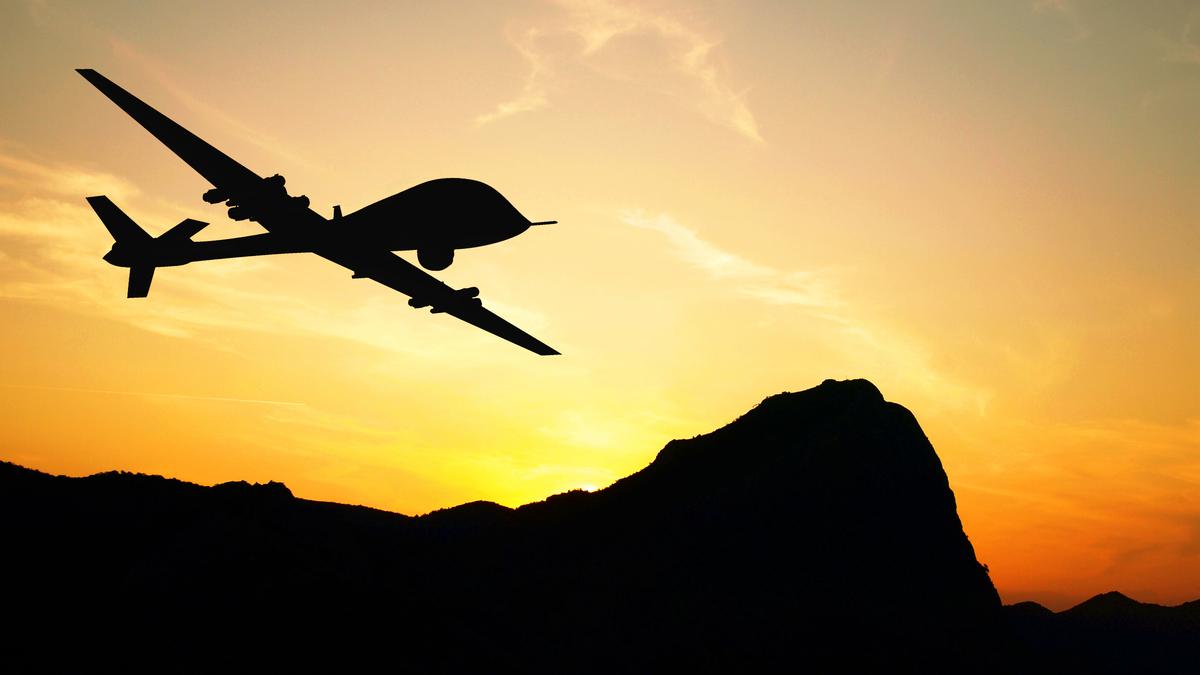
‘India should leverage its technological advancements to become a supplier of fixed-wing UAVs for the broader Indo-Pacific region’
| Photo Credit: Getty Images/iStockphoto
The world first noticed a massive shift in how wars are fought during the second Nagorno-Karabakh conflict (2020): the increasingly integral role that drones play. For India and Pakistan, Operation Sindoor (May 7-10) cemented this shift, as unmanned aerial vehicles (UAVs) and unmanned combat aerial vehicles (UCAVs) moved from serving purely reconnaissance needs to becoming instrumental for precision strikes.
An exercise of modernisation
In the aftermath of the clashes, India is trying to upgrade and modernise its military. In 2024, India finalised an order for 31 MQ-9B Reapers from the United States, including SkyGuardian and SeaGuardian models. These aircraft will supplement India’s need for maritime domain awareness and reinforce the strategic partnership between the countries. Still, this partially addresses just one of the needs of a country with its varied terrains and multiple contested borders. Given its vast border territories with Pakistan and China in high-altitude regions, India requires systems that are capable of high-altitude surveillance — larger fixed-wing long-range systems that can deliver significant payloads during precision strikes, and smaller, cost-effective systems for precision strikes.
Currently, the unmanned platforms that India has in operation address only some of these requirements. Israeli systems such as the relatively older Harop loitering munition and the medium-altitude long-range Heron are useful for aerial strikes and surveillance, respectively. But they are not the most advanced systems on the market. Apart from these, India largely operated legacy systems that were imported prior to the last decade and some indigenous models.
Despite the long defence relationship between the two countries, as India seeks to procure state-of-the-art drones, it no longer makes sense for it to look largely to the U.S. for outright purchases. There is likely to be a shift where the U.S. becomes more important for components such as power plants and electronic payloads. Conversations about leading unmanned aerial systems invariably come back to the U.S., China, Türkiye, and Israel. However, recent reports question whether American drones are good enough even to meet their domestic demands, let alone dominate the export market.
A New York Times article, written by an observer of exercises with U.S. drone companies, revealed the growing gap between American systems and those made by Russia and China. Congruent with these concerns, the ‘US Drone Dominance’ executive order was rolled out with massive plans for American drone production. A CNAS report finds that the U.S.’s adherence to the Missile Technology Control Regime (MTCR) has resulted in it falling far behind China and Türkiye in the UAV export market, making up only 8% of the market as of the end of 2023. Although recent and upcoming reforms to the MTCR will allow the U.S. to tap into the export market more, it already lags behind.
Today, India finds itself trying to fill these gaps in its arsenal through imports, joint ventures and domestic production, largely relying on Israel and European countries. Given the state of its ties with both China and Türkiye at the moment, India is unlikely to rely on either country for critical defence technologies. As it attempts to further its own interests, India should also leverage its technological advancements to become a supplier of fixed-wing UAVs for the broader Indo-Pacific region.
The China factor
A number of countries, including Vietnam, the Philippines, Taiwan, South Korea and Japan have relations with China that can only be described as strained at best. Maritime Domain Awareness is essential for these countries to monitor and counter China’s use of ‘gray-zone’ warfare, using agents such as their coast guard and maritime militia, to enforce disputed territorial claims. This also enables them to protect their sovereignty and safeguard vital economic interests, such as fisheries and energy exploration, from constant encroachment.
Israel finds itself otherwise preoccupied with its long and drawn-out conflict in West Asia, and is unlikely to be a reliable supplier to the region. With the U.S. struggling to remain in the race, Türkiye is the primary option for procuring high-performance and cost-effective systems. Given that India and Türkiye find themselves in a fairly adversarial relationship, it is in India’s interest to prevent Türkiye from expanding its sphere of influence through drone diplomacy.
Many countries in the Indo-Pacific also share similar geographies with India, and, consequently, a pressing need for systems tailored to maritime domain awareness and high-altitude border patrol. If India were to develop systems to suit its own needs, they would also suit the strategic requirements of its not-so-distant neighbours.
A contested space
The U.S.-shaped vacuum in the drone market within the Indo-Pacific, is becoming a highly contested space that India would benefit from filling. Not only would it boost trade and influence with a host of countries but it would also fulfil the country’s own strategic needs. Despite being held back by bureaucratic red tape and a public sector dominated defence sector, it would benefit India to capitalise on its existing ties with Israel and utilise its learnings from joint production ventures to better its domestic UAV ecosystem. Beyond just producing everything domestically, technology-sharing regimes with like-minded countries in the Indo-Pacific would further mutual interests and foster trust-based relationships in a region that is becoming increasingly polarised.
Adya Madhavan is Research Analyst, The Takshashila Institution
Published – August 14, 2025 12:08 am IST
